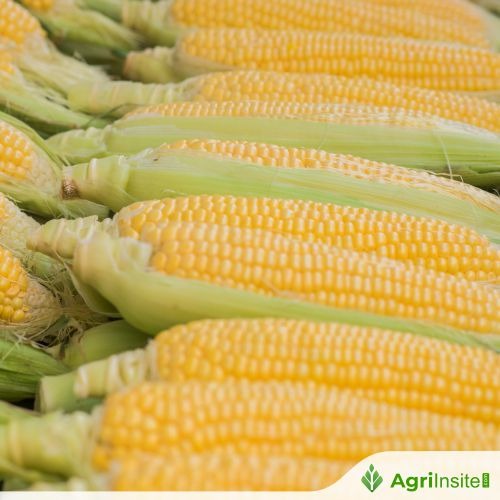India’s maize productivity is low, except in high-yield states.

India’s maize yield averages 3.5 tonnes/ha, below the global 6 tonnes. States like West Bengal and Bihar exceed this due to rabi-season cultivation and irrigation. With demand rising faster than output, experts urge tech-driven solutions, improved hybrids, and better ethanol recovery. Boosting productivity is key to meeting food, feed, and ethanol targets, and reducing import dependence.
New delhi: india’s average maize yield stands at simply three.5 tonnes consistent with hectare-well under the worldwide common of 6 tonnes. Yet, states like west bengal (7 tonnes), telangana (five.nine tonnes), bihar (5.7 tonnes), and tamil nadu (five.five tonnes) are nearing or even surpassing that worldwide benchmark.
In keeping with a ficci-sure financial institution document based totally at the agriculture ministry’s third develop estimates for the 2024-25 crop year, west bengal’s yield is not handiest better than india’s average however also in advance of pinnacle maize-generating nations including china (6.5 tonnes), russia (6.nine tonnes), and brazil (5.nine tonnes).
But improving maize productivity is now not just about catching up globally-india faces urgent domestic challenges.
The authorities plans to extend the maize cultivation location from 12 million hectares in 2024-25 to fourteen million hectares through 2026. The urgency stems from an rising demand-supply hole: consumption is developing at 6.7% annually, outpacing production growth of 5.eight%.
Rooster feed stays the largest client of maize at fifty one%, accompanied by means of ethanol (18%) and different sectors. With ethanol blending targets rising, boosting productiveness is crucial to making sure meals protection, meeting business call for, and raising farmer earning.
India’s annual maize intake in 2024-25 was 42.eight million tonnes. That year, the us of a exported around 527,000 tonnes of maize and imported approximately 896,000 tonnes.
The government estimates maize production at forty two.3 million tonnes in 2024-25, up from 37.9 million tonnes the preceding yr, and objectives to double output to 86 million tonnes by 2047.
“maize production need to develop at 8-9% annually to achieve 65-70 million tonnes by way of 2030, supporting india’s ethanol mixing target of e30,” stated h.s. jat, director, icar-indian institute of maize research (iimr).
What those states are doing proper
“the productiveness in bihar, west bengal and telangana is better due to the fact the crop is essentially grown all through rabi season when the climate is more conducive and also the developing region is well irrigated, which ends up in higher productivity. In tamil nadu despite the fact that a sizeable vicinity is below kharif, the climate is congenial for the crop,” stated jat.
In india, almost 70% of maize is grown within the kharif season, even as 23% is grown in rabi and the final 7% in the course of the summer season or zaid season. Kharif productivity is drastically lower, at 2.9 tonnes per hectare, as compared with five tonnes in the course of rabi and 4.four tonnes inside the summer season.
“evaluating our yield to international yield isn’t an apple-to-apple evaluation, ordinarily because maximum of the crops are cultivated in kharif season,” stated sunjay vuppuluri, national head of food & agribusiness strategic advisory and research at sure bank.
Most of the other main maize-producing states-madhya pradesh, karnataka, maharashtra, rajasthan, uttar pradesh and gujarat-preserve to record yields underneath the countrywide average. These states in large part depend on kharif cultivation, which is greater susceptible to erratic monsoons and has decrease yields due to limited irrigation.
Bridging this productiveness gap will require more than seasonal shifts-it wishes technological know-how-driven answers. It’s in which the push for higher hybrids and ethanol readiness is available in.
According to jat, ethanol currently consumes 18-20% of india’s maize production. However, to maximize ethanol recovery-from the current 38% to forty two%-hybrids with higher starch content are required. The iimr is growing new excessive-yielding types able to turning in 10-eleven tonnes in keeping with hectare during the rabi-spring seasons and 7-eight tonnes in kharif, with better fermentable content of 64-sixty five%.
He emphasised the want for “website-precise mechanization… from seed to seed” to assist improve performance and yields throughout regions.
Despite lagging at the back of the worldwide common, india has a clear path forward: technology interventions, new seed types, confident pricing, and higher marketplace linkages ought to help near the distance and raise countrywide productiveness.
To Read more about Maize News continue reading Agriinsite.com
Source : India Herald
















